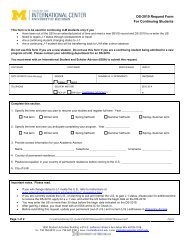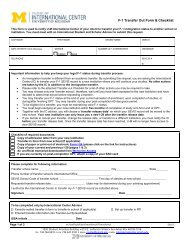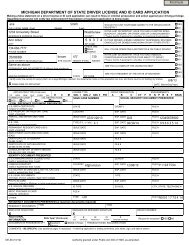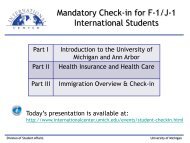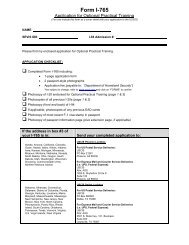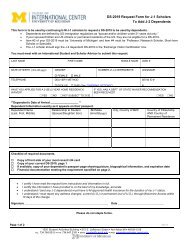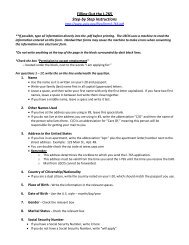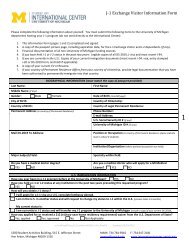rain, Ice and Snow. - International Center
rain, Ice and Snow. - International Center
rain, Ice and Snow. - International Center
Create successful ePaper yourself
Turn your PDF publications into a flip-book with our unique Google optimized e-Paper software.
Quiz<br />
1. When adjusting speed to minimize risk, drivers should consider ___________ .<br />
a. environmental <strong>and</strong> road factors<br />
b. vehicle factors<br />
c. driver condition factors<br />
d. all of the above<br />
2. When your vehicle’s tires lose traction by riding up on a film of water, this<br />
called __________.<br />
a. Hydroplaning<br />
b. Aqua running<br />
c. Hydro loss<br />
d. Water skating<br />
3. Drivers should avoid using cruise control in conditions of low traction, such as<br />
<strong>rain</strong>, ice <strong>and</strong> snow.<br />
a. True<br />
b. False<br />
4. When it <strong>rain</strong>s, the pavement is most slippery approximately ____________<br />
after the <strong>rain</strong> begins.<br />
a. 2 hours<br />
b. 10-15 minutes<br />
c. 60 minutes<br />
5. In optimal driving conditions, drivers should maintain a following distance of<br />
_____ seconds.<br />
a. 1-2<br />
b. 2-3<br />
c. 3-4<br />
d. 7-8<br />
6. When coming to a stop behind another vehicle, you should stop far enough<br />
behind the vehicle to _________.<br />
a. See the vehicle’s taillights<br />
b. See the vehicle’s exhaust pipe<br />
c. See the vehicle’s rear tires<br />
d. See the vehicle’s rear tires plus some pavement<br />
7. When another vehicle is following you too closely, reduce your risk by<br />
_________.<br />
a. Maintaining speed until the vehicle is able to safely pass you<br />
b. Accelerating to match the speed of the vehicle behind<br />
c. Moving into the oncoming traffic lane to allow the vehicle behind to pass<br />
d. Suddenly applying your brakes
8. The most difficult area to keep a good space margin is to the _______ of your<br />
vehicle.<br />
a. Front<br />
b. Left side<br />
c. Right side<br />
d. Rear<br />
9. When passing another vehicle on a two-lane highway, it is safe to return to the<br />
right lane ________.<br />
a. When you front door reaches the front of the other vehicle<br />
b. When the roadway ahead is clear<br />
c. When you can see the entire front end of the other vehicle in your rearview<br />
mirror<br />
d. After giving the right-turn signal<br />
10. If you find yourself unintentionally driving partially off the roadway, you should<br />
______.<br />
a. Gradually coast down to a slow speed, then pull back on the road when<br />
safe to do so<br />
b. Firmly apply the brakes <strong>and</strong> steer to the right<br />
c. Turn the steering wheel sharply to the left <strong>and</strong> accelerate<br />
d. Turn on your emergency flashers <strong>and</strong> accelerate<br />
11. If you begin to experience a skid, the best response is to _______.<br />
a. Downshift to a lower gear<br />
b. Turn on the emergency flashers<br />
c. Continue to look <strong>and</strong> steer where you want the vehicle to go<br />
d. Smoothly apply the brakes<br />
12. When you direct your attention 20 to 30 seconds ahead of your vehicle <strong>and</strong> to<br />
both sides of the vehicle, you are able to identify objects or conditions that<br />
could increase your level of risk.<br />
a. True<br />
b. False<br />
13. When using ground viewing you are not looking for ________________<br />
a. Shadows<br />
b. The color of a vehicle to your side<br />
c. Pavement markings<br />
d. Road conditions<br />
14. To develop a selective search pattern, you should ________________<br />
a. Know where to direct your search<br />
b. Classify information into major groups<br />
c. Both A <strong>and</strong> B are correct<br />
d. Neither A nor B is correct




